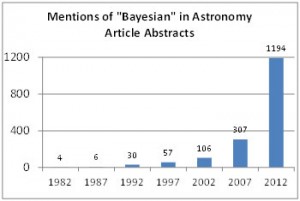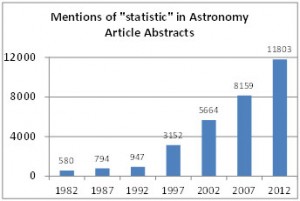Statistical Science: The Intel Inside© of Science
Envisioning a statistical scientist as the head of a science agency
Steve Pierson, ASA Director of Science Policy
When President Obama’s choice to be the next director of the National Science Foundation (NSF) is confirmed, former Purdue University President France Cordova will become the 14th director of the NSF and the second woman to lead the agency. Cordova is clearly a strong nominee, having held many science and higher education leadership positions. No doubt she will be a superb NSF director.
Cordova’s imminent and much deserved confirmation has led me to ponder the benefits of a statistical scientist serving in the top leadership positions of science, whether it be as the head of an agency such as NSF or the National Institutes of Health, or an advisory committee like the National Science Board or the President’s Council of Advisors on Science and Technology. Without meaning to undermine Cordova’s nomination, allow me to discuss three compelling reasons to one day have a statistical scientist heading the NSF specifically, reasons that can be easily generalized to other agencies/bodies.
First, as the science of collecting, analyzing, and understanding data—as well as accounting for the relevant uncertainties—statistical science permeates all the sciences, immediately giving a statistical science director a meaningful connection to each NSF directorate and avoiding any real or perceived favoritism toward life science, physical science, social/behavioral/economic science, engineering, mathematics, or any other broad area. Few other fields intersect with engineering and sciences as well as statistical science, with the exceptions of computer science and applied mathematics.
Second, the increasing importance of interdisciplinary approaches to addressing scientific challenges means NSF would benefit from a representative of the scientific discipline that epitomizes multidisciplinary research approaches. With few statistical scientists collecting data independently, statistical scientists begin working with other scientists early in their graduate work, an approach that multiplies throughout their careers. Indeed, I learned this year of a young statistical scientist pulling together a four-member scientific team representing four distinct scientific disciplines to study neuroscience networks. Statistical scientists excel by learning the language and culture of other scientific disciplines. Scientists of other disciplines are also becoming increasingly aware of the payoffs of engaging statistical scientists as co-investigators at the start of the scientific process (i.e., the study/experiment design phase). In short, a statistical science NSF director would bring experience, skills, and leadership to interdisciplinary science.
The third reason for having a statistical scientist lead our nation’s preeminent science agency is the most compelling: statistics improves the science. Through better-designed experiments, more sophisticated data analyses, more precise uncertainty quantification, and numerous other statistical science capacities, statistical scientists help other scientists deliver better results more quickly. Statistics making the science better is particularly important for the NSF in these tight budgetary times because it means getting more science done for the same or lower investment. Indeed, we’ve anecdotally heard about the significant increase in the quality of proposals the National Institute of Justice has received in its forensic science program since a statistical scientist became the deputy director (and has been acting director since fall 2012.)
A shining example of statistics making the science better is the statistical revolution that has occurred in astronomy, giving birth to astrostatistics. As little as two decades ago, early 20th-century statistical techniques dominated data analysis in astronomy. Since then, while it seems there is much more to be done, it appears astronomers have been increasingly engaging statisticians and 21st-century statistical techniques, yielding major advances in exoplanet exploration, cosmic microwave background work, and dark energy research. The number of mentions of statistical terms in astronomy journal abstracts illustrates this revolution (see figures 1 and 2). The movement also has spawned a new working group of the American Astronomical Society and the birth of the International Astrostatistics Association, which has grown rapidly to 400 members since its 2009 founding.

Figure 1: Mentions of “Bayesian” in abstracts of astronomy journal articles in the Smithsonian Astrophysical Observatory (SAO)/NASA Astrophysics Data System have risen exponentially (http://adsabs.harvard.edu/abstract_service.html).

Figure 2: Mentions of “statistics” or “statistical” in astronomy article abstracts covered by the SAO/NASA database seem to indicate a turning point in the mid 1990s.
As compelling as these reasons are, promoting statistics in the scientific community is challenging. Any scientist analyzing data has some level of statistical skill, and there is not a bright line of when to bring in a statistical scientist. In addition to a feeling of being able to do one’s own statistical analysis (no doubt rightfully so at times), there’s plenty of ignorance about what statistical scientists bring to the table due in no small part to statistical scientists themselves.
Around the ASA headquarters, we often discuss the challenge of promoting statistics and, acknowledging similar challenges by major companies, cite the old BASF commercials tagline, “We don’t make the products, we make the products better.” Or a more recent example, “Intel Inside.”
Despite the difficulties, I think the challenge of promoting statistical science is easing somewhat as science advances and data sets become larger, more complicated, and more diverse. Statistical scientists working with astronomers explained their engagement this way: there is no longer low-hanging fruit in astronomy, thereby pushing astronomers to turn increasingly to statistical scientists to push the limits of discovery. With such discoveries and advances being made on the margins of detectability, small changes in sensitivity can be enough to make the next discovery, and statistical scientists are incredibly valuable there. The perception of better funding chances with the inclusion of statistical scientists is also a factor. Indeed, I heard the engagement of statistical scientists by astronomers has reached a stage at which not having a statistical scientist on a proposal makes the proposal less likely to be funded.
Another factor increasing the engagement of statistical scientists, at least for astronomers, is the Big Data revolution (wherein, for example, astronomy graduate students increasingly have their data delivered to them, rather than doing the all-night observing runs). Expertise is required in image analysis, time series analysis, nonlinear regression, survival analysis, and multivariate classification—all areas in which statistical science makes important contributions.
The three reasons I provide for a statistical science NSF director are general. The Big Data revolution just mentioned is a more specific one of which NSF and the Obama Administration are striving to take advantage. With the statistical perspective and modern techniques statistical scientists bring to Big Data, a statistical scientist as head of the NSF would certainly help the many fields of science dealing with Big Data. While data science and analytics are frequently mentioned more often than statistics in the Big Data age, statistics is a core element of each.
Perhaps this realization is what is driving the strong growth in the number of statistical science degrees (bachelor’s degrees more than doubled in the last five years, master’s and PhD degrees doubled over the last nine years). Indeed, NIH has recognized the arrival of the Big Data age by creating the Associate Director for Data Science (ADDS), essentially a chief data scientist. In response to calls from NSF’s StatsNSF Committee for how the foundation could better support the statistical sciences, the American Statistical Association recommended a chief statistical scientist in the director’s office, which would address the concerns for which StatsNSF was created and serve the role the ADDS plays at NIH.
The large growth in the number of undergraduate and graduate statistical science degrees and relatively high proportion of women receiving those degrees (for 2012, 42% for bachelor’s and PhDs and 50% for master’s) mean greater recognition of statistical science through a statistical science NSF director would help the Obama Administration’s efforts to increase the STEM education pipeline and the representation of women therein (though statistics seems to be just as challenged as other disciplines at attracting under-represented minorities.)
Just as for any field, a statistical science director wouldn’t have all the background helpful to lead the varied elements of this $7 billion agency effectively. Among the criticisms, I’m sure one would be that statistical scientists don’t have the lab management skills for NSF’s “big science” projects. My point, though, is that statistical scientists bring as much—and perhaps more—to the table as scientists of other fields in this era of interdisciplinary research, Big Data, and cost efficiency.
I wish director-designee Cordova a successful tenure at the helm of the NSF. Down the road, I hope statistical scientists are considered as her successor and the successors of other science agency directors. In the meantime, the NSB, PCAST, and other such science bodies would benefit from having a statistical scientist representative.










Think BIG and encourage our members to dream BIG! Continue to advocate for statisticians being at the table, AND at the head of the table! There are many of our members within the beltway who can help with this also, and do the same with the reps in our local communities. As statistical sciences are having an impeccable impact on other sciences, engineering, health, business, education, etc., why not help lead the innovation and economic development! Nice job.
I don’t even know how I ended up here, but I thought this
post was good. I don’t know who you are but certainly you’re goin to a amous blogger if youu aren’t already 😉 Cheers!
Here iss my blog post :: social media management Leighton Buzzard
Welcome!
Amstat News is the monthly membership magazine of the American Statistical Association, bringing you news and notices of the ASA, its chapters, its sections, and its members. Other departments in the magazine include announcements and news of upcoming meetings, continuing education courses, and statistics awards.
ASA HOME
Departments
Archives
ADVERTISERS
PROFESSIONAL OPPORTUNITIES
FDA
US Census Bureau
Software
STATA
QUOTABLE
“ My ASA friendships and partnerships are some of my most treasured, especially because the ASA has enabled me to work across many institutional boundaries and
with colleagues from many types of organizations.”
— Mark Daniel Ward
Editorial Staff
Managing Editor
Megan Murphy
Graphic Designers / Production Coordinators
Olivia Brown
Meg Ruyle
Communications Strategist
Val Nirala
Advertising Manager
Christina Bonner
Contributing Staff Members
Kim Gilliam